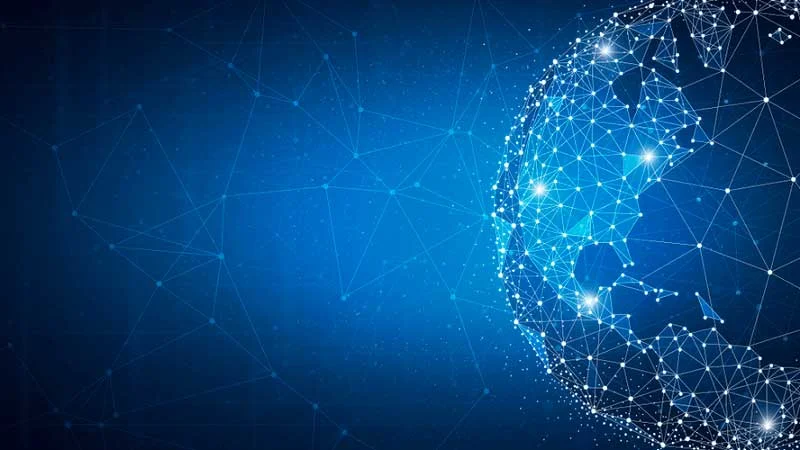However, fog computing is a extra viable possibility for managing high-level security patches and minimizing bandwidth points. Fog computing allows us to find data on every node on local sources, thus making information analysis more accessible. The appreciable processing energy of edge nodes allows them to compute massive quantities of knowledge without sending them to distant servers. Integrating the Internet of Things with the Cloud is an reasonably priced approach to do business.
The main distinction between fog computing and cloud computing is that Cloud is a centralized system, whereas Fog is a distributed decentralized infrastructure. A key problem in fog computing is attaining environment friendly data analysis and processing at the fringe of a decentralized community. Fog and edge computing can improve security by providing https://www.globalcloudteam.com/fog-computing-vs-cloud-computing-definition-key-differences/ additional safety measures to edge devices, similar to encryption and authentication. This type of fog computing combines each client-based and server-based fog computing. Hybrid fog computing is good for applications that require a combine of real-time processing and high computing energy.
Configuring fog computing offers organizations extra options for processing data in a correct method, which is advantageous. Cloud computing though related, but not the identical as fog computing. Fog computing has management over the information that might be managed locally and transferred to the server. Remote knowledge facilities are the hubs of information processing in cloud computing.

Two forms of satellites from the National Oceanic and Atmospheric Administration (NOAA) monitor fog from excessive in the sky. These satellites orbit Earth in the identical actual time that it takes for Earth to make a full rotation. Orbiting Earth in such a method permits the satellite to hover over one location, providing a chook’s eye view.
Fog Computing Vs Cloud Computing For Iot Initiatives
On the opposite hand, cloud computing presents centralized information management and pay-as-you-go models. This makes it an easy-to-implement and cost-efficient possibility for companies, particularly SMBs. Cloud computing presents challenges in information privacy and security, as delicate data is transmitted and saved in distant knowledge facilities. Cloud providers typically make use of safety measures, similar to encryption and access controls, but the knowledge is in the end entrusted to the cloud provider’s infrastructure. Fog computing is geographically distributed and operates in shut proximity to the info sources and end-users. Fog nodes are located at the community edge, such as IoT gateways, routers, or on-site servers, enabling native processing and instant response.
Secondly, cloud computing presents seamless scalability, enabling easy enlargement as the project grows. Lastly, it offers accessibility and suppleness, permitting users to access information and functions from anywhere with an internet connection. Fog computing, also referred to as edge computing, brings computational assets and companies nearer to the sting of the community, near the information sources and end-users. It goals to supply real-time processing, low-latency communication, and lowered bandwidth utilization by decentralizing computation and storage capabilities to edge units and fog nodes.
- Scalability is achieved by adding more edge devices and fog nodes to the network.
- Only in cloud computing, it’s possible to integrate multiple information sources, together with the system and the cloud computing data source.
- As in comparison with cloud computing, fog computing has many benefits.
- Cloud computing, on the other hand, is a centralized computing model that relies on distant servers to retailer, manage, and process knowledge.
- The new know-how is prone to have the biggest influence on the event of IoT, embedded AI, and 5G solutions, as they, like never earlier than, demand agility and seamless connections.
Cloud computing, on the opposite hand, is a centralized computing model that depends on distant servers to retailer, handle, and process knowledge. In cloud computing, the information generated by IoT units is transmitted to cloud servers through the internet for analysis and storage. Firstly, it offers just about unlimited storage and computing energy, allowing for the handling of huge datasets.
Installation And Management
In this submit, we’ll understand the ideas of edge, fog, and cloud computing and their key differences. But still, there’s a difference between cloud and fog computing on sure parameters. The distributed structure of a fog system makes it safer than a cloud computing system. The centralized nature of a cloud system leads to excessive latency, whereas fog techniques expertise low latency as a result of their decentralized nature. So, edge and fog computing are greatest suited for use circumstances the place the IoT sensors could not have the best internet pace.

Cloud computing supplies much more superior and higher processing technological capabilities than fog and edge frameworks. It lets you save extra knowledge than the other two with limited processing power. Cloud computing has advanced security measures in place to safe knowledge within the cloud, whereas fog computing focuses on offering safety measures to edge units. It ought to be noted that fog networking is not a separate structure.
Cloud Computing
Contact us now or take a look at our sources to proceed exploring cloud computing and far more. It includes a quantity of edge nodes that assist you with a direct reference to any bodily hardware. Edge, fog, and cloud are essential computing frameworks that may empower companies to thrive in today’s superior technological ecosystem.
Sometimes it’s chilly sufficient, however the air doesn’t have any particles. In this case, water within the air turns into “supercooled.” This supercooled water is a liquid, but it is colder than the freezing level (32ºF). When it comes into contact with chilly surfaces such as roads and sidewalks, it instantly forms a dangerous icy layer.
Off-premises companies present the scalability and flexibility wanted to handle and analyze data collected by related devices. As the demand for data will increase, extra networking channels will emerge. The fog computing vs. cloud computing battle will continue as businesses search to manage and disseminate information more quickly and sustainably. Fog computing is a more decentralized type of cloud computing whereby the computing expertise is between a cloud and a data supply or another information heart.
Fog Computing Vs Cloud Computing
While fog computing and cloud computing offer significant benefits, additionally they pose sure challenges and potential dangers for IoT projects. In fog computing, the distributed nature of computation introduces complexities in managing a lot of units and making certain synchronization. Moreover, the limited computing power and reminiscence of edge devices could limit the complexity of computations that can be carried out. In cloud computing, knowledge privateness and safety considerations arise due to the transmission and storage of sensitive knowledge on remote servers. Additionally, reliance on the web introduces latency and the danger of service disruptions in case of community outages.
So, a fog or mist is solely a cloud that has formed close to the earth surface. We’ve already obtained used to the technical time period cloud, which is a network of a quantity of units, computers and servers linked to one another over the Internet. Clouds type at many various altitudes and may be several miles above the floor.
Exploring Computing Models: Edge Computing Vs Fog Computing Vs Cloud Computing
They are meant to assist resource-intensive IoT apps that require low latency. Such nodes are usually a lot closer to units than centralized information centers in order that they will present immediate connections. Fog networks depend on a decentralized strategy, with methods at the network’s edge, similar to sensors or devices, storing and processing information. This makes it extremely secure compared to cloud and fog computing. This helps to ensure that data processing and evaluation can continue even when some units or servers fail. They rely on a network of sensors and units positioned throughout a metropolis to gather information and make selections about how to optimize metropolis providers and infrastructure.
While fog computing excels in low latency, enhanced privacy, and offline capabilities, cloud computing shines in scalability, extensive storage, and accessibility. Additionally, consider integrating both fog computing and cloud computing to leverage the advantages of both fashions. Ultimately, selecting the best computing mannequin will make sure the success of your IoT project. To achieve a greater understanding of how fog computing and cloud computing are applied in real-world IoT projects, let’s discover some examples.
In distinction to cloud computing, where resource management may be spread or centralized, fog computing centralizes it. One of the primary benefits is decreased latency by processing data nearer to the supply. Fog computing and edge computing have a number of benefits over conventional cloud computing, notably in relation to processing information in real-time. The fog layer offers additional safety measures to edge devices, such as encryption and authentication. This helps to guard delicate knowledge from unauthorized entry and cyberattacks.
Fog computing, also referred to as edge computing, is a decentralized computing mannequin that brings computation and data storage closer to the sting devices. In fog computing, the processing and analysis of knowledge happen on gadgets positioned close to the information supply, such as gateways or edge servers. Firstly, fog computing reduces latency by processing knowledge domestically, enabling real-time decision-making. Secondly, it enhances privacy and safety by maintaining delicate knowledge throughout the native network.

Fog computing is designed to work with a broad range of units, including sensors, cameras, and other IoT units. This makes it an ideal solution for organizations with diverse hardware requirements. Fog computing has a quantity of unique characteristics that make it a beautiful option for organizations looking to course of data in real time.
Grow your business, transform and implement technologies based on artificial intelligence. https://www.globalcloudteam.com/ has a staff of experienced AI engineers.